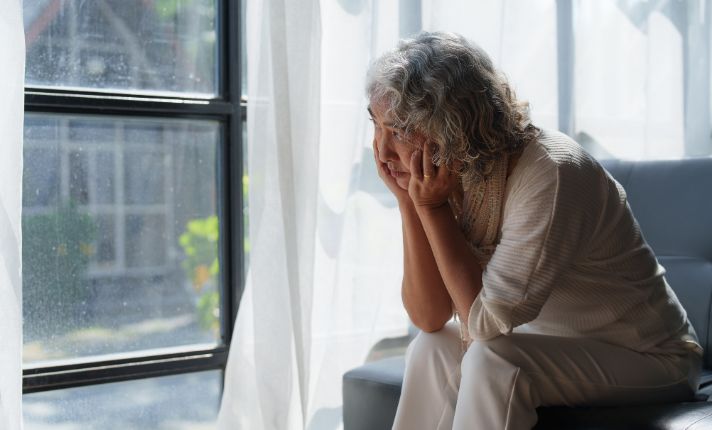Arizona is home to some of the most beautiful deserts in the country— but rural residents shouldn’t face a desert when it comes to mental health. While access to mental health services in rural areas is a known challenge across the country, it’s especially pronounced in Arizona. And it’s not hard to see why.
Over the past decade, Arizona’s population has grown more than 14%, with most new residents — and providers — settling in urban and suburban areas of the state, leaving rural areas high and dry.
As both the population and demand for Arizona mental health services have surged, the state has reported 233 mental Health Professional Shortage Areas (HPSAs), 34% of which are located in rural or frontier regions.
If you’re a provider, mental health access directly impacts your ability to keep pace with growth and connect with Arizonans who need care. In this post, we’ll break down some of the contributing factors in care disparities — and share some solutions that behavioral health providers, clinics, school programs, and tribal organizations have found to close the care gap.
Arizona's Service Gap: Why Access is Uneven
Let’s start with the landscape. One helpful way to understand Arizona’s unique mental health picture is to visualize population distribution alongside key mental health statistics:
- Urban/suburban clusters with plenty of activity and services make up approximately 89.3% of the state’s population.
- Rural populations, found on the other side of large land swaths, make up approximately 10.7% of the state’s population, with tribal lands accounting for 27-28% of the state.
So, what happens when we look at how this population distribution affects mental health outcomes?
Here’s a quick look at suicide rates in Arizona by geographic area for comparison. (2021, Arizona Dept. of Health Services):
- Suicide rate in urban areas: 16.9 per 100,000 people
- Suicide rate in rural areas: 34.5 per 100,000 people — more than double the urban rate.
- Suicide rate in Apache County: 65.1 per 100,000 people — the highest in the state and nearly four times the state average.
Clearly residents in rural areas and tribal lands are experiencing a crisis that is much more severe than in urban areas.
Not Enough Providers to Meet Arizona Mental Health Services Demand
Another key reason for alarming mental health outcomes is that the state of Arizona currently meets just 40% of its mental health care workforce needs—earning it a ranking of 47th in the nation for behavioral health workforce availability.
One provider can only do so much in a day. The shortage of active psychiatrists, therapists, case managers, and social workers means that not everyone who reaches out for help is able to get it in a timely manner.
Why the shortage? The Arizona mental health services workforce pipeline faces several challenges:
- Lack of local training programs
- Limited clinical supervision, especially in rural and tribal areas
- Low reimbursement rates
- Cumbersome licensure processes that delay new provider entry
- High burnout and premature exits from the profession
The need to have qualified mental health professionals in the workforce —with the bandwidth to take on new patients—cannot be overstated. And even when providers are available, connecting them with clients in rural areas isn’t always easy.
When Help is Miles Away
One reason for the sobering statistics above is the sheer distance between home and the nearest mental health provider for many residents. According to a 2024 report from the Arizona Department of Health Services, residents in certain Primary Care Areas (PCAs) travel between 2 to 73 miles to get to their nearest primary care provider. Half of the PCAs with the longest travel distances are located in tribal areas.
Though these findings focus on primary care, they reflect a similar reality for access to mental health services in rural areas: help is often literally out of reach.
Limited Infrastructure in Rural Arizona
Affordable public transportation helps rural residents get to mental health providers—even if the journey is long and inconvenient. And reliable internet access allows them to receive care from home via telehealth. But many communities in rural Arizona lack access to either option.
Arizona State University’s American Indian Policy Institute reported that
- 33% of people living on tribal reservations only had internet access through a smartphone
- 18% of tribal residents had no access of any kind
- Many cited affordability as a barrier—even where access was available
Tribal Communities & The Importance of Culturally Relevant Care
“Tribes need assistance in addressing behavioral health professional shortages, especially in rural communities.” (The Arizona Advisory Council on Indian Health Care’s Tribal Health Issues Prioritization Review and Strategic Plan)
Arizona’s tribal leaders have identified their most pressing mental health priorities. Among them are suicide rates, death by alcohol, substance use disorder, and violence in and out of schools.
In many tribal communities, mental health is viewed holistically, integrating spiritual, emotional, and physical wellness. Culturally responsive care isn’t just about language access—it’s about valuing and incorporating Indigenous knowledge systems. But the number of providers who are both qualified and culturally literate enough to serve these communities is limited.
Stigma & Mistrust: Invisible Barriers to Care
The stigma surrounding mental and behavioral health in rural communities is universal and well-documented. The Rural Mental Health Hub explains:
“Rural residents may be more susceptible to the stigma of needing or receiving mental healthcare in small communities where everyone knows each other and fewer choices of trained professionals can lead to a lack of faith in confidentiality, as well as a reliance on the informal care of family members, close friends, and religious leaders.”
In Arizona, these concerns are amplified by a deep and historically justified mistrust of outside health systems in tribal and migrant communities. A history of forced relocations, cultural insensitivity, and other documented injustices has made some community members skeptical about getting help.

What’s Being Done to Improve Access?
The Arizona Health Care Cost Containment System (AHCCCS) has launched several initiatives to expand behavioral health access in rural Arizona. These include:
- Telehealth Expansion: First scaled during the pandemic, telehealth remains a lifeline for remote communities.
- Behavioral Health Workforce Development Initiative: Includes loan repayment, training, and incentives to recruit and retain providers in underserved areas.
- Integrated Care Models: Combined physical and behavioral health services under one plan—a particularly efficient approach in rural Arizona where provider networks are sparse.
Other recent developments include:
- Medicaid expansion, which increased coverage for many in the state.
- More than $400 million in grants and spending to improve internet access, per the Arizona Commerce Authority.
- Broadband projects along rural highways, initiated by the Department of Transportation.
- Advocacy groups like Rural Arizona Action leading efforts to close the rural equity gap.
Promising Solutions for Local Providers
In addition to getting the necessary funds and infrastructure in place, Arizona providers are also getting creative with their service delivery.
Mobile Clinics & Hybrid Care Models
Mobile clinics are used by organizations like Native Health and Indian Health Service (IHS) to bring mental health services directly to remote tribal communities. These clinics reduce infrastructure barriers and increase trust through a consistent, visible presence in tribal communities.
Hybrid models (combining in-person care and telehealth) are particularly useful in school-based mental health programs in rural counties.
Example: The Arizona Department of Education’s partnership with Cartwheel allows students to meet with therapists virtually from schools, with follow-up in-person services provided by community-based clinicians.
Community Health Workers & Peer Support
Arizona’s AHCCCS-funded workforce development initiatives support the training of Community Health Representatives (CHRs) and peer support specialists—many of whom are tribal members. These individuals act as liaisons between providers and community members, improving engagement, trust, and continuity of care.
Example: On the Hopi Reservation, a behavioral health clinic might hire a Hopi peer support worker to accompany clients to appointments, translate cultural values for providers, or run group support sessions in Hopi or English to improve patient comfort and participation.
Culturally Responsive Care for Tribal Populations
Programs like Project AWARE Wildcats (a partnership with the Navajo Nation and Johns Hopkins Center for Indigenous Health) provide trauma-informed, culturally grounded mental health services in schools. These integrate Navajo cultural values, use Native languages when possible, and collaborate with elders and tribal leaders.
Example: A counselor at a school on the Navajo Nation might incorporate Talking Circles, smudging ceremonies, or storytelling alongside CBT (Cognitive Behavioral Therapy) in a treatment plan for a student with PTSD.
Better Data Sharing & Care Coordination
Collaboration across tribal behavioral health programs, county health departments, schools, and AHCCCS allows providers to share critical information about client needs, streamline referrals, and avoid duplication of services.
Platforms like Health Information Exchanges (HIEs) in Arizona are expanding to include tribal clinics, allowing better coordination between primary care, behavioral health, and emergency services.
Example: A student flagged for mental health concerns by a school counselor in Coconino County can be referred to a tribal clinic, with shared notes and background available through the HIE, allowing the tribal clinician to build on the existing care plan rather than starting from scratch.
How AxiomEHR Supports Providers Serving Rural Arizona
Technology can ease provider burnout, expand the reach of your care, and strengthen collaboration.
Axiom is an EHR designed specifically for behavioral health and integrated care, with features that directly support providers working in rural Arizona:
- Built-in telehealth: Support for audio/video conferencing and instant messaging makes it easy to deliver virtual care across rural Arizona’s vast regions—or to collaborate internally across locations.
- Voice-to-text documentation: Voice recognition software allows providers to document encounters and clinical plans quickly—dramatically reducing time spent on paperwork.
- Care coordination tools: Shareable news feeds and multi-disciplinary coordination features ensure smooth communication between clinicians across care settings.
- Built-in compliance: AxiomEHR includes unique user authentication, data encryption, and audit logging to ensure HIPAA compliance.
- Simplified Medicaid and multi-payer billing: Navigate AHCCCS and other payers with ease, even during periods of policy change.
With AxiomEHR, providers can scale care, stay compliant, and reach more clients—no matter the setting.
Conclusions & Next Steps
Expanding access to mental health access services in rural Arizona is critical for the health of residents and for the future health of your practice. By embracing care innovations and supportive technology, providers can start to close the services gap.
Telehealth, integrated care, and culturally grounded services are not just trending solutions—they’re long-term strategies for expanding access and delivering high quality care.
Ready to serve your community more effectively?





